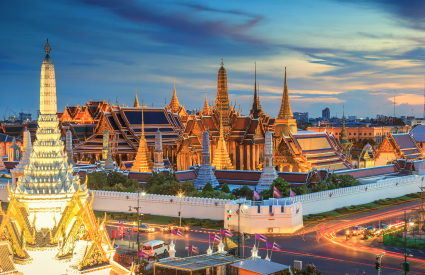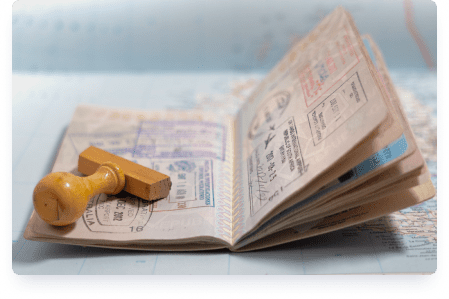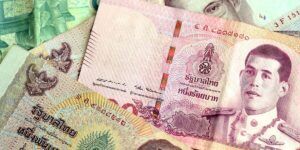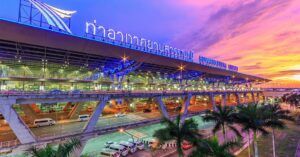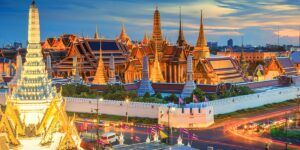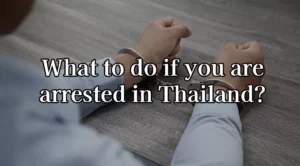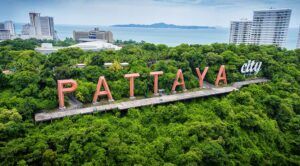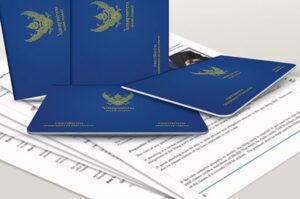Have you ever wondered how international love stories find their happy ending in the United States? The answer often lies in the K-1 Visa, commonly referred to as the Fiancé Visa. This visa forms an important link for US citizens and their foreign fiancés, so they can enjoy their life in America. For those in Thailand dreaming of marriage with a US citizen, comprehending the K-1 Visa is an essential first step toward realizing this dream.
Although the K-1 Visa process might appear difficult, confusing, and overwhelming from afar, having a clear understanding will make you able to apply one for your fiance without a hiccup. In this article, we will be covering everything from its concept to the US fiance visa requirements and procedures.
Understanding the K-1 Visa
The K-1 Visa stands as a unique nonimmigrant visa specifically designed for foreign fiancés of US citizens. It allows the foreign partner to enter the United States, provided that the couple marries within 90 days of arrival. This visa category is distinct from other partner-related visas, like the K-3 marriage visa, because it is exclusively for couples planning to marry in the US
To be eligible for this visa, specific criteria must be met. Firstly, one partner must be a US citizen. Secondly, the couple must have met in person at least once within the two years before applying for the visa, unless the meeting would violate strict and long-established customs, or would cause extreme hardship to the US citizen. Additionally, both partners must be legally free to marry and must genuinely intend to marry within 90 days of the foreign fiancé’s arrival in the US.
Understanding these eligibility requirements is key to a successful application. The K-1 Visa is not just a pathway to be together; it’s a legal commitment with specific conditions both parties must meet. This section of the article lays the foundation for the entire visa process, highlighting the need for a genuine relationship and a clear intention to marry within the stipulated timeframe.
Application Process
The process of applying for a K-1 Visa involves several steps, each critical for a successful outcome. It begins with the US citizen filing Form I-129F, Petition for Alien Fiancé(e), with the United States Citizenship and Immigration Services (USCIS). This form is the initial request to recognize the relationship and is accompanied by various supporting documents to prove the legitimacy of the relationship, including proof of having met in person and evidence of ongoing communication.
Once the I-129F petition is approved, the case is transferred to the National Visa Center (NVC). The NVC plays a pivotal role, conducting background checks and ensuring all necessary documentation is in place before forwarding the case to the US Embassy or Consulate in Thailand. The foreign fiancé then needs to complete medical examinations, submit additional documentation, and prepare for the visa interview.
The interview at the US Embassy or Consulate is a crucial part of the process. The foreign fiancé must present all required documents and answer questions about their relationship and plans in the US. It is essential to be thoroughly prepared for this interview, as it significantly influences the decision on the visa application.
This section of the article guides the reader through each step of the application process. By outlining these steps clearly, it provides a roadmap for US citizens and their Thai fiancés, helping them understand what to expect and how to prepare for each stage of the application.
Requirements and Documentation
A successful K-1 Visa application hinges on providing a complete and accurate set of documents. The required documentation verifies the relationship’s authenticity, the couple’s intent to marry, and their ability to financially support themselves in the United States.
There are a few important documents including proof of the US citizen’s status such as a passport or birth certificate, and evidence of the couple’s relationship Pictures showing the couple together or their travel plans would be adequate to prove that the relationship is genuine.
Financial stability is also another important requirement. The US citizen must submit an Affidavit of Support (Form I-134) to indicate they can support their fiancé, ensuring the foreign partner will not rely on government assistance.
Furthermore, the foreign fiancé must undergo a medical examination by an approved physician and provide the results to the US Embassy. Background checks and security clearances are also integral parts of the process in line with the US security protocols and ensure the foreign fiancé poses no threat.
Having the right documentation not only supports the visa application but also lays the groundwork for a smooth transition to life in the US after marriage.
Legal Considerations and Restrictions
Navigating the legal framework of the K-1 Visa is important for couples throughout this journey. A key rule of this visa mandates that the couple must marry within 90 days of the foreign fiancé’s entry into the United States. Not meeting this condition could result in legal issues for the foreign fiancé, including the risk of facing possible deportation. The US couples need to be aware of and comply with this requirement to avoid any complications and facilitate a seamless start to their life together in America.
Following the marriage, the next step for the foreign spouse involves changing their status to become a lawful permanent resident. This process, known as Adjustment of Status, is accomplished by submitting Form I-485 to USCIS. During this stage, the couple must provide evidence of a genuine marital relationship.
The K-1 Visa also places certain limitations on the foreign fiancé, particularly in terms of employment and travel. Initially, the foreign partner is not permitted to work in the United States. However, they can apply for a work permit once they arrive. Travel outside the US before obtaining specific authorization, known as Advance Parole, is not advised as it may impact their K-1 status.
Common Challenges and Solutions
Applying for a K-1 Visa can present various hurdles, but being prepared can help mitigate these challenges. One of the most frequent issues encountered is the lengthy processing time, which can vary significantly based on individual circumstances and workload at USCIS and the US Embassy or Consulate. Applicants should be prepared for this wait and plan accordingly. Another common challenge is the potential denial of the visa.
Denials can occur for reasons such as insufficient evidence of a genuine relationship, failure to meet financial requirements, or discrepancies during the interview process. To minimize the likelihood of denial, applicants should ensure their documentation is thorough, accurate, and up-to-date. Preparing meticulously for the visa interview is also crucial, as this is a significant factor in the decision-making process.
Providing detailed and consistent information about the relationship and future plans is key. Applicants should also be ready to address any concerns that may arise during the application process, such as explaining long periods of separation or differences in culture and language.
Costs and Timeline
The process of obtaining a K-1 Visa involves various fees and a timeline that applicants should be aware of. The initial step, filing the I-129F petition, requires a fee, which is subject to change and should be verified with the latest information from USCIS. Once the petition is approved and the case moves to the National Visa Center, additional fees for processing and medical examinations are incurred.
The cost of the visa application itself, paid at the US Embassy or Consulate, is another expense that applicants need to consider. Additionally, applicants should budget for ancillary costs such as travel for the interview, document translation, and courier services.
The timeline for the K-1 Visa process can vary widely based on individual cases and processing times at USCIS and the US Embassy or Consulate. Generally, the entire process, from filing the I-129F petition to receiving the visa, can take several months. Applicants should monitor their case status regularly and maintain flexibility in their plans, as processing times can fluctuate.
Contact Siam Legal
Securing a K-1 Fiancé Visa is an important step for US citizens and their Thai partners aspiring to start their married life in the United States. This article provided insights into the visa’s requirements, application procedure, necessary documentation, legal aspects, typical obstacles, and associated expenses.
Clear understanding and meticulous preparation are key for a streamlined application. Applicants should seek up-to-date information from official sources and may benefit from expert legal advice for specific guidance. With careful planning and informed steps, couples can successfully navigate this journey, bringing their vision of a life together in the US to fruition.
Contact Siam Legal
 | Ken Graham US Immigration Attorney Partner, Siam Legal International |
 | Natdaphon Luengsawang Senior US Visa Consultant Siam Legal International |
LIVE SUPPORT
 CALLCall (702) 799 9719 |  CHATChat with our representative | |
| From US: Sunday – Friday 5:00 PM – 7:00 AM (New York time) 2:00 PM – 4:00 AM (Los Angeles time) From Thailand: Monday – Friday | ||
